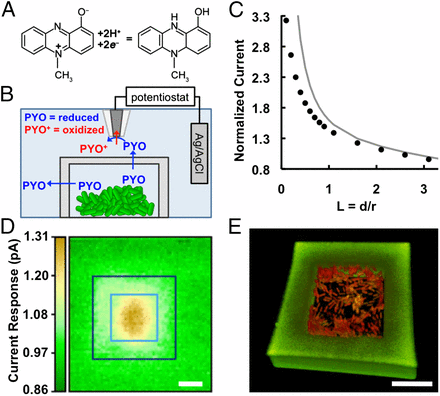PNAS
Jodi L. Connell, Jiyeon Kim, Allen J. Bard, Jason B. Shear, and Marvin Whiteley
Microbes frequently live in nature as small, densely packed aggregates containing ∼101–105 cells. These aggregates not only display distinct phenotypes, including resistance to antibiotics, but also, serve as building blocks for larger biofilm communities. Aggregates within these larger communities display nonrandom spatial organization, and recent evidence indicates that this spatial organization is critical for fitness. Studying single aggregates as well as spatially organized aggregates remains challenging because of the technical difficulties associated with manipulating small populations. Micro-3D printing is a lithographic technique capable of creating aggregates in situ by printing protein-based walls around individual cells or small populations. This 3D-printing strategy can organize bacteria in complex arrangements to investigate how spatial and environmental parameters influence social behaviors. Here, we combined micro-3D printing and scanning electrochemical microscopy (SECM) to probe quorum sensing (QS)-mediated communication in the bacterium Pseudomonas aeruginosa. Our results reveal that QS-dependent behaviors are observed within aggregates as small as 500 cells; however, aggregates larger than 2,000 bacteria are required to stimulate QS in neighboring aggregates positioned 8 μm away. These studies provide a powerful system to analyze the impact of spatial organization and aggregate size on microbial behaviors.

